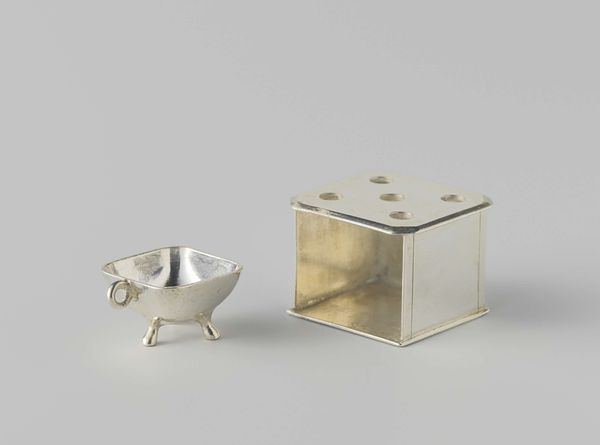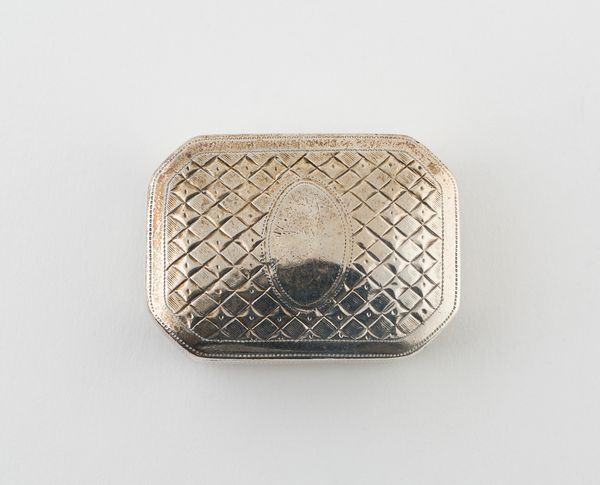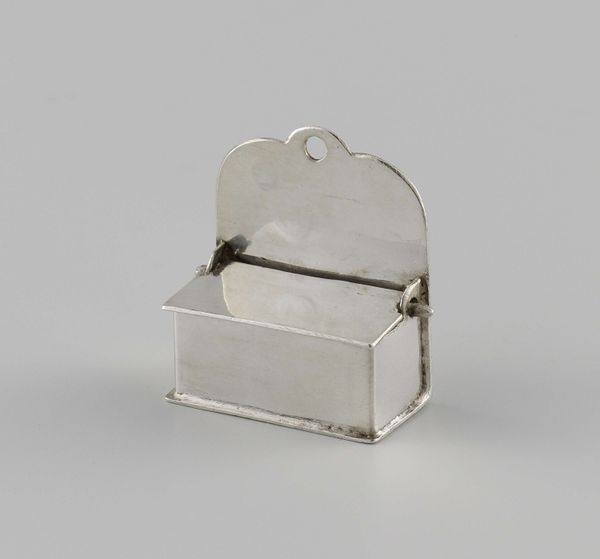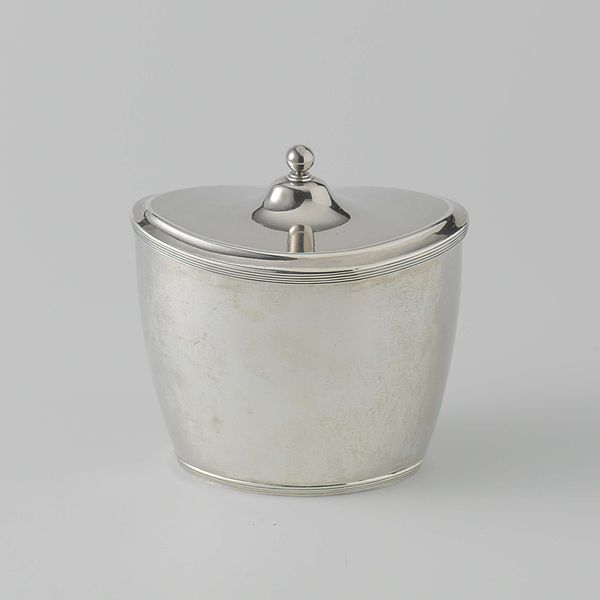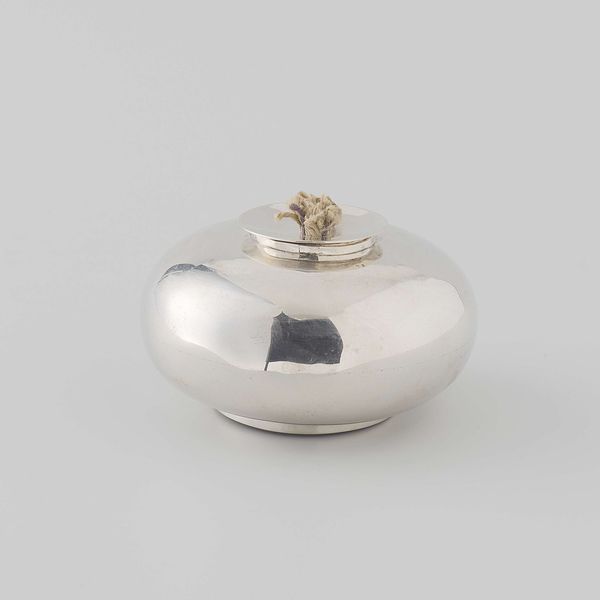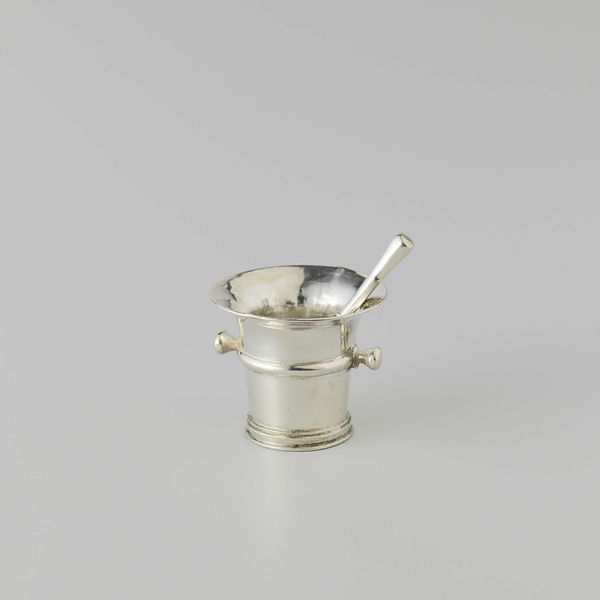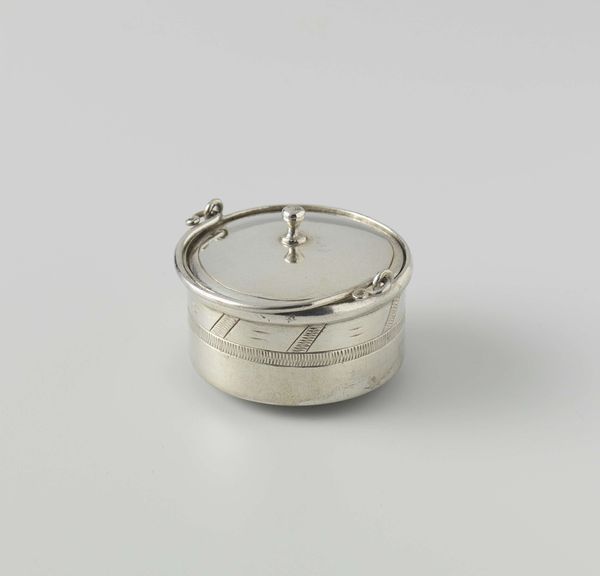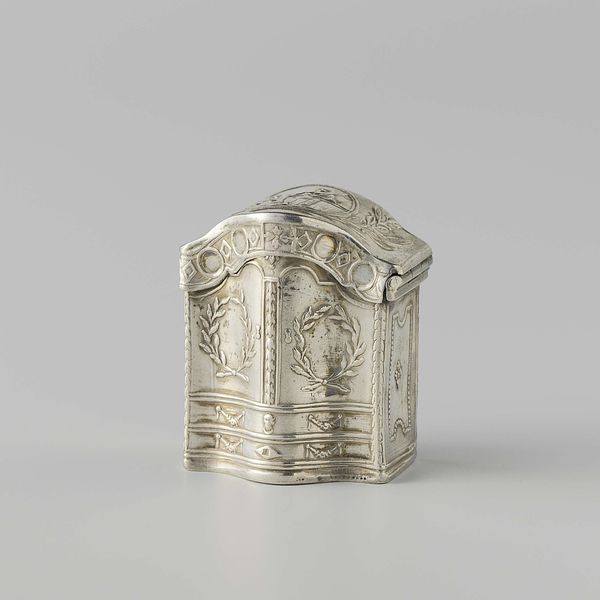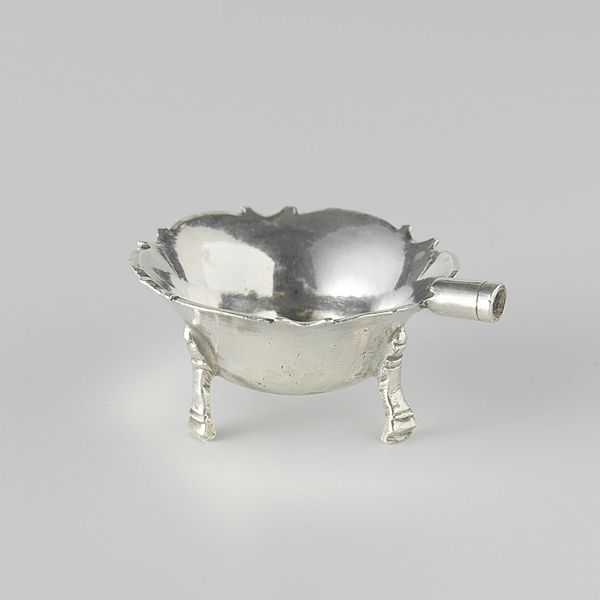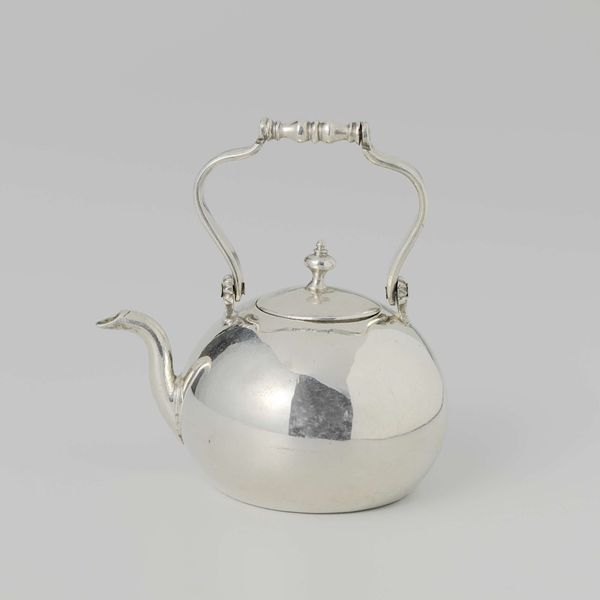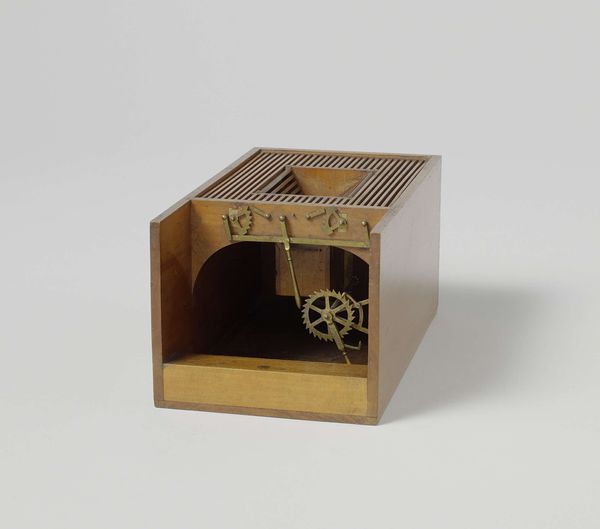
silver, metal
#
silver
#
baroque
#
metal
#
decorative-art
Dimensions: height 1.4 cm, width 2.6 cm, depth 2.1 cm
Copyright: Rijks Museum: Open Domain
Curator: Immediately, I see such deliberate form and such crisp precision. Editor: Yes, there's a stark formality about it, isn’t there? It's intriguing. Shall we tell everyone what they’re looking at? Curator: We shall. This is a “Komfoor,” made in 1756 by Daniël van Strant. It’s crafted from silver, decorative art, of the Baroque style. Editor: Given that context, seeing a warming stand designed in silver underscores social inequalities of that time; access to comfort became a visual signal of wealth and class status. Curator: And technique too. Examine the process. Van Strant, or those working under him, painstakingly transformed raw silver. How would you contextualize this process given the social implications? Editor: This silver-working process speaks volumes about labor, from mining to production. Every curve, every join in that metal reflects an unseen human cost. Who mined the silver? Who shaped it? Whose labour went into its final polish? How did this feed colonial systems of exploitation? Curator: A warming stand like this also forces me to consider what social needs, rituals, or even commodities, did it service? Editor: Precisely. Beyond simple heating, consider what goods were deemed worthy of being kept heated and how consumption rituals reinforced class structures in 18th-century households. It is as much a symbolic artifact of status as it is a functional object. Curator: I wonder, though, does framing this komfoor too stringently as solely a tool of oppression miss something in how people then found usefulness and maybe even enjoyment in it? The artistry in its design would be important for its patron. Editor: True, yet the aesthetic enjoyment was likely exclusive and gained at the cost of many unnamed, underserved peoples' exclusion and exploitation. Curator: A point well-made; it provides perspective about our relationship to functional yet valuable commodities even now. Editor: Definitely. And interrogating historical materialism allows us to reassess modern supply chains to promote better transparency in the process of labour.
Comments
No comments
Be the first to comment and join the conversation on the ultimate creative platform.
